20 Amazing Dances From Around The World That Will Get Your Feet Tapping
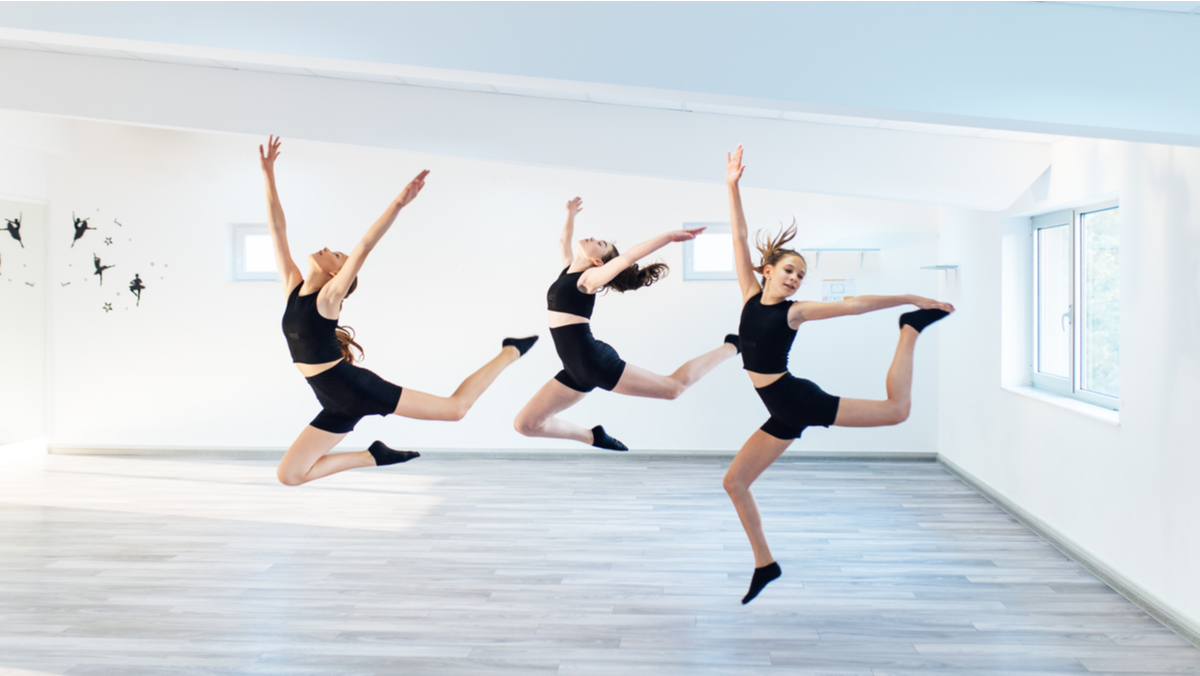
Quick Jumplinks to Navigate
The rhythms of the world are all wrapped up in one single activity- Dance. Be it the soft beats of the heart, the rustle of leaves, the splash and fall of the river as it cascades on a rock, rhythm is everywhere and where there is rhythm there is dance too! Happiness, joy, harvest, celebration or just different stages of life, there is dance for everything and as long as there is dance, we need not worry about happiness being out of our sight.
Join us, on this beautiful journey as we map the world for you and take you around through 20 different dance steps.
1. The Fandango of Spain
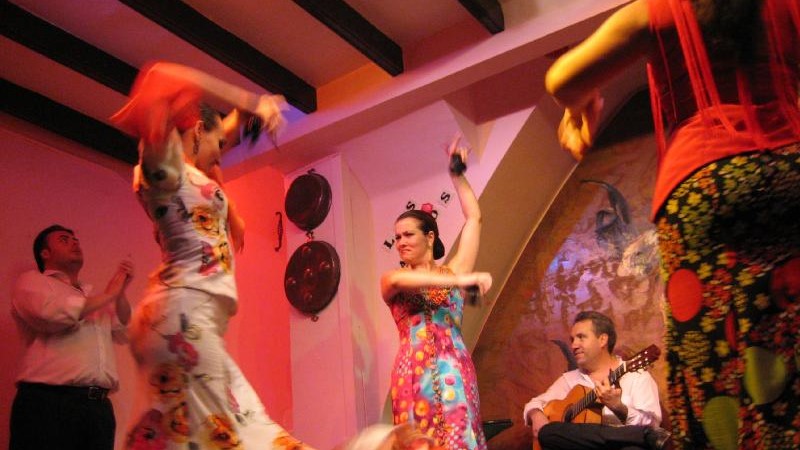
This lively, exuberant dance belongs to the passionate land of Spain. Usually performed in triple meters by couples, the dance is fast paced and embodies raw passion. This colourful dance form originated in this very land and has since spread to Portugal and other parts of the world. Characterized by the lusty sounds of Spanish guitar, the beauty of the dance comes alive with the rhythmic patterns created with the tapping beats and clapping of hands, called ‘palmas’ in Spanish. The rich red flowing gowns of the dancers make the dance form all the more spectacular!
Planning a trip to Spain, Check out the Thrillophilia Reviews
2. The Capoeira of Brazil
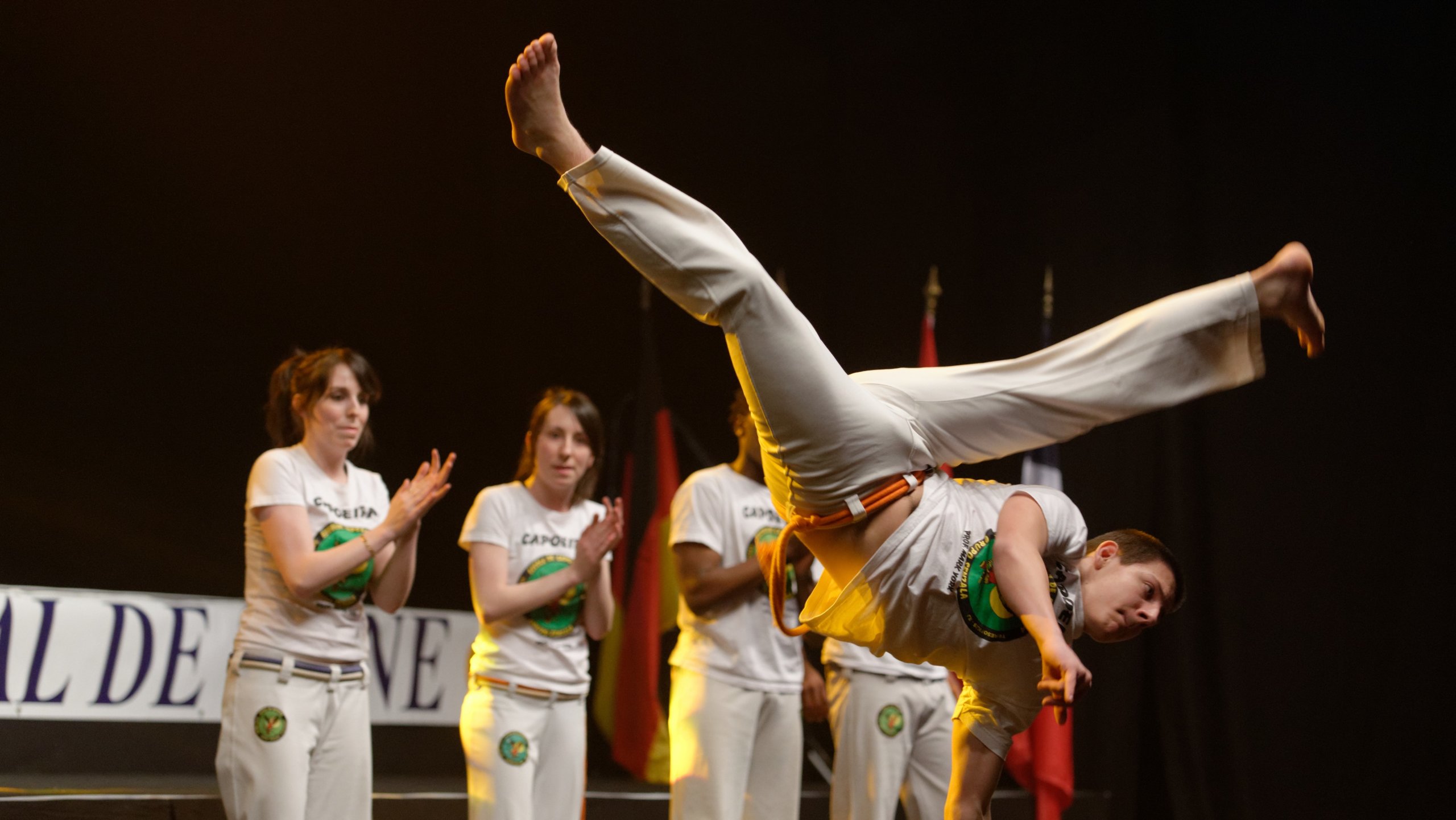
After that exciting form, let’s take our feet to match the acrobatic rhythms and sounds of Capoeira! An indigenous form of dance, originated in Brazil and is a combination of martial arts, acrobatics and music traditional to its African roots. The fast paced kicks, quick yet complex moves use immense strength and leverage to further incorporate spins and other acrobatic techniques. The music is usually accompanied by male vocals, traditional African drums and side percussions like Reco-Reco, Berimbaus a wind instrument and pandeiros. Music is an integral part of Capoeira as it decides the mood of the performance.
Planning a trip to Brazil, Check out the Thrillophilia Reviews
3. The Tinikling Dance of the Philippines
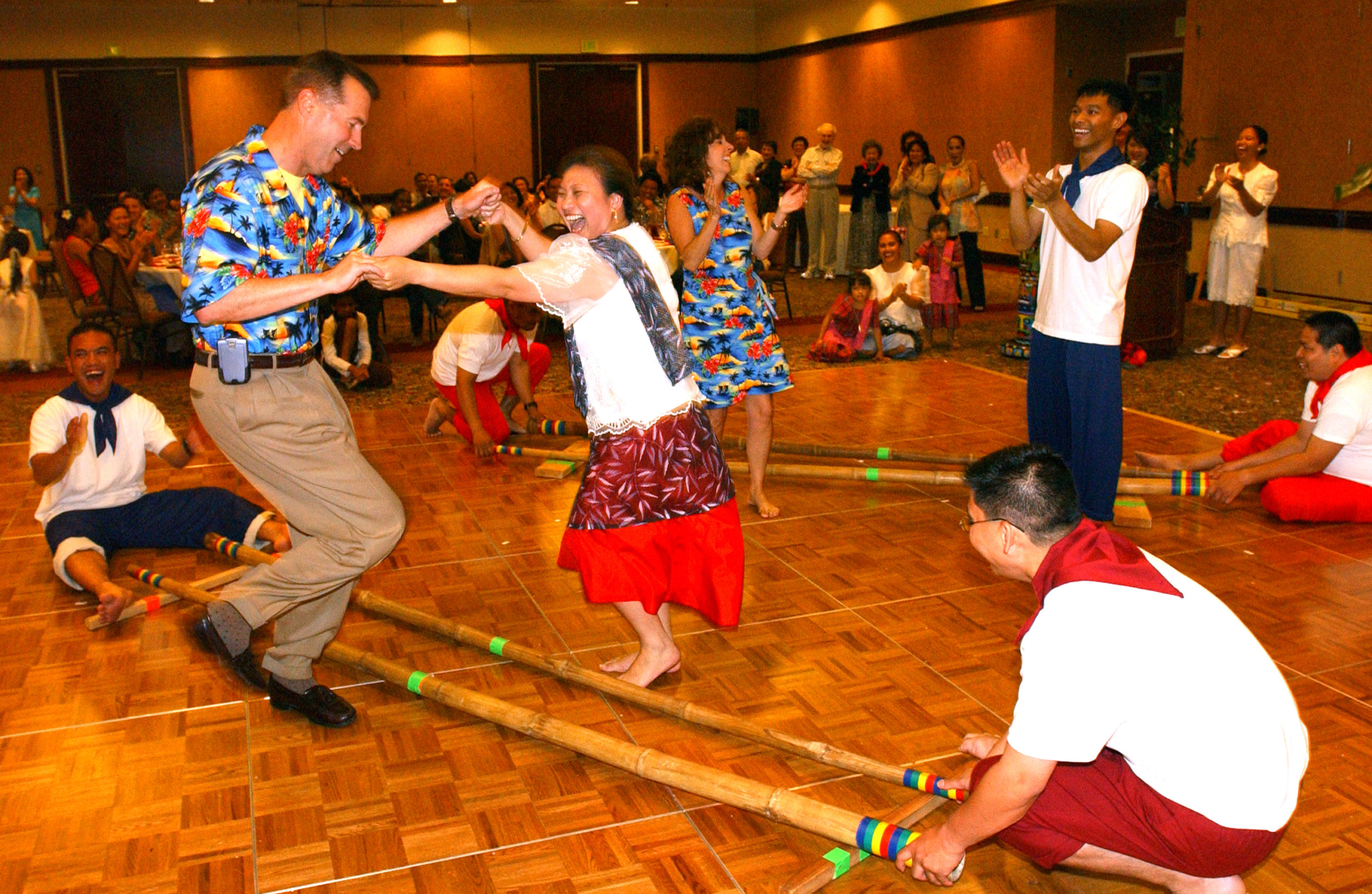
The Tinikling is Philippines National dance. It is a fast rhythmic dance that mimics the movements of the tikling birds in the rice fields in their effort to avoid being clipped with the bamboo traps. The dancers are all Asian Pacific Heritage Committee members. During their performance Col. Steve Arquiette and wife Deb are invited to dance with Carrie Basaca,School Age Coordinator at Travis Youth Center and Major Clarence Gagni from 60 MDTS/SGQC.
Tinikling is a dance form that originated in the colonial era in the Phillipines. Danced around the tapping Bamboos, the dance imitates the movements of a local bird called ‘Tikling’. The locals mimic the graceful actions that the bird makes in order to escape the bamboo traps set by the farmers and is danced around Bamboos that are tapped on the ground in order to create patterns of beats. The dancers then navigate between the bamboos in pairs. A close cousin of this dance is the Cheraw or Bamboo dance in Mizoram, India. From its humble folk roots, the rhythm of the dance has contributed to it being taught at school levels as an acrobatic and fitness practice.
Planning a trip to Philippines, Check out Thrillophilia Reviews
4. The Kabuki Dance of Japan
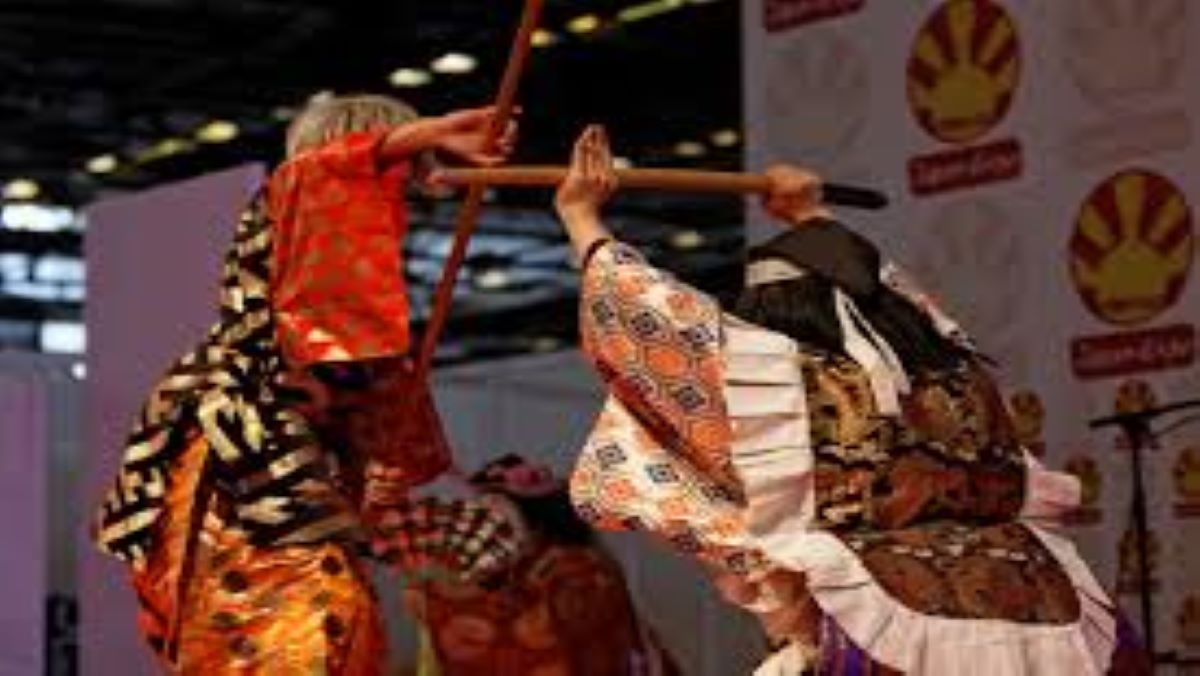
From the upbeat and folksy to the downright theatrical, bizzare and yet splendid, Kabuki is a dance form that originates in the mysterious land of Japan. A heady concoction of Dancing and Singing, Kabuki is starkly colourful because of its costumes and techniques used for make-up. Evolving from its earlier ribald and suggestive themes, the dance has seen many downfalls and was almost wiped out. Thanks to the efforts of dancers, Kabuki has now regenerated itself in the era of earphone guides and has also been performed in English.
Must Read: Adventurous Experience of Chadar Trek in Ladakh
Here you can check why people choose Thrillophilia, Click Here!
Planning a trip to Japan, Check out the Thrillophilia Reviews
5. The Irish Step-dance
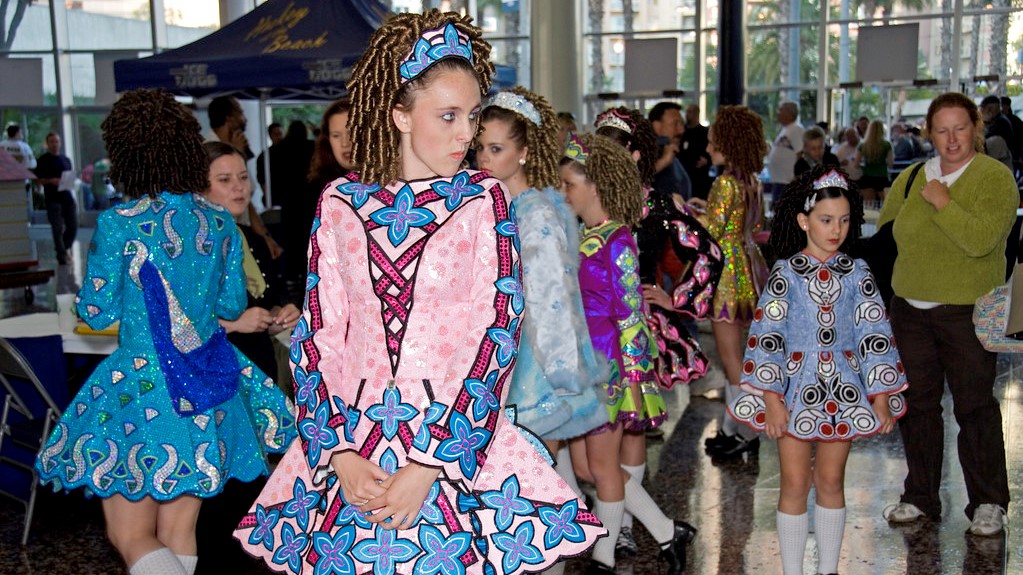
The land of the clover leaf and Leprechauns beckons us next. Beautifully intricate, The Irish Stepdance is a combination of fast paced leg movements set off by a relatively stiff upper body. The movement area is a combination of ballet and tap dancing. The charming rhythm patterns and artistic flows created by the feet is a true delight to witness. An explanation for the stiff upper body and vigorous footwork can be found in the need to have a stage, since tap dances require a hard surface to create rhythms, the performers would often unhinge doors and as a result of the small floor space, would restrict the use of arms! From its humble origins, Irish Step dancing grew in popularity after being performed in the interval 1994 Eurovision Song Contest.
6. The Huli Vesha of Karnataka
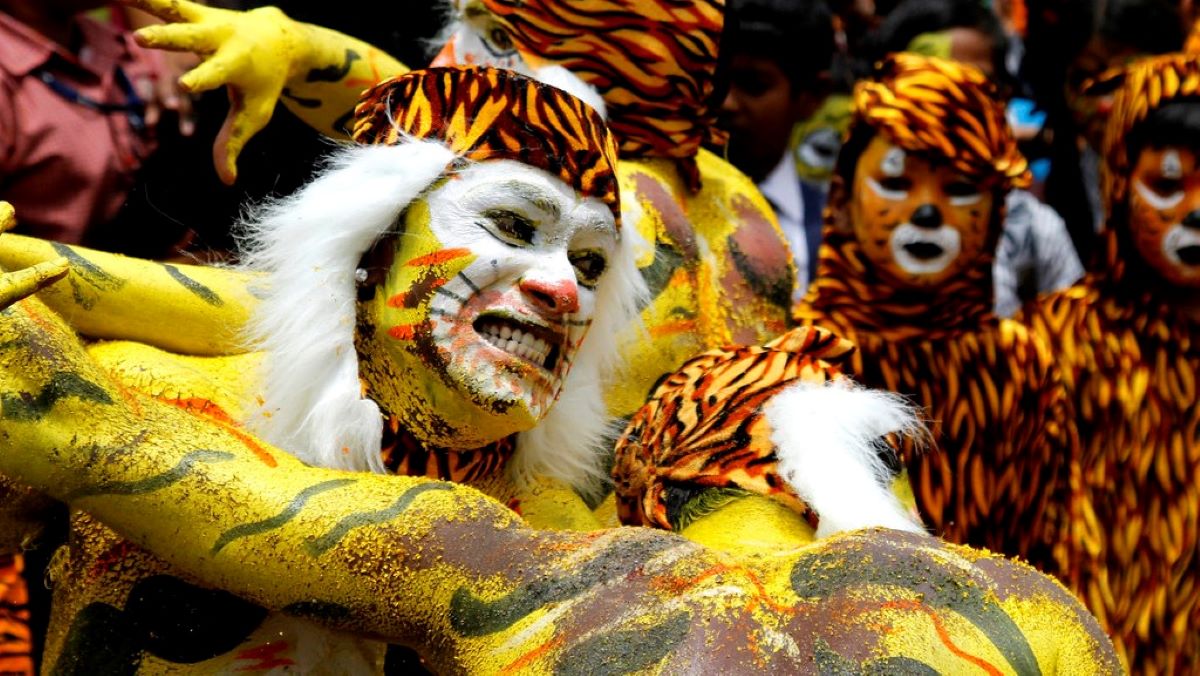
Translating to mean, Lion Mask in English, Huli Vesha is a traditional dance form native to the Tulu Nadu area in Karnataka. Performed during the famed festival of nine nights, Navratri, it is a dance form in appeasement of the Goddess Sharada whose preferred animal happens to be a tiger. The youthful faces of dancers are painted with the colours of tiger stripes, the makeup is only removed on the last day of Navratri. The act consists of traditional narratives, but is truly enthralling and entertaining to watch!
Planning a trip to Karnataka, Check out the Thrillophilia Reviews
7. The Quadrille of France
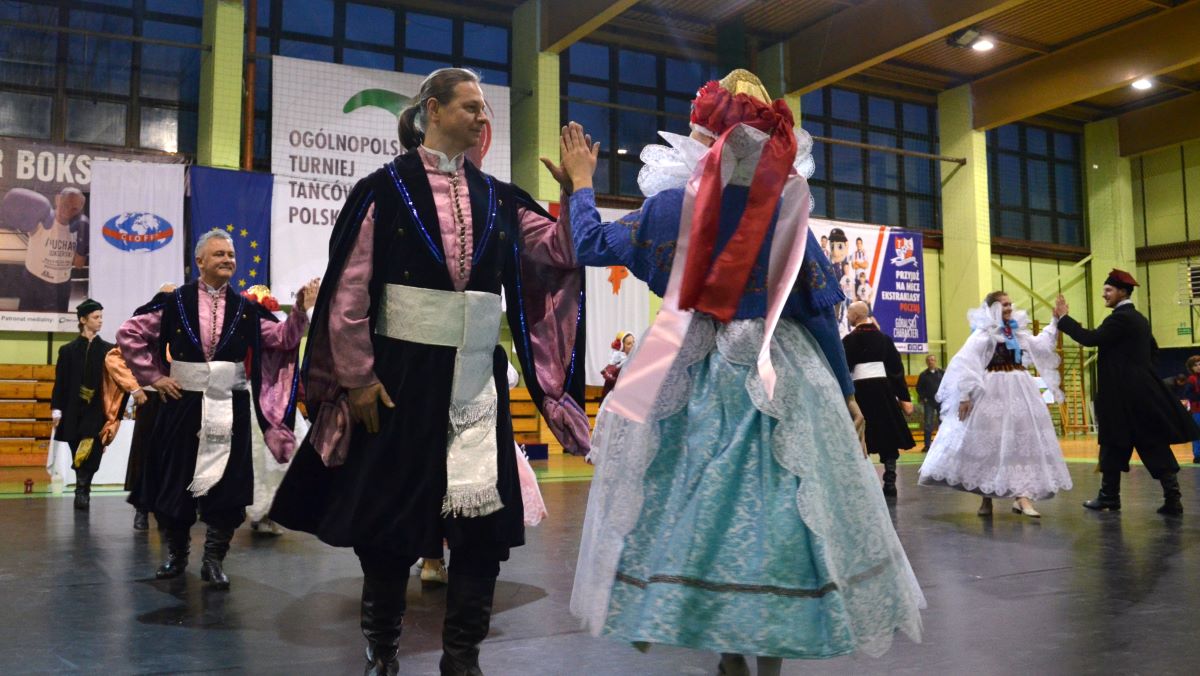
A dance reminiscent of the golden era of late 18th and 19th century, the charm of the Quadrille lies in its simple, precise and graceful movements coupled with the melodious sounds of the harp, piano and the violin. The dance is usually performed by couples, a minimum of four, who all stand in a rectangular formation. The swish of the ball gowns, the bell like shape swinging ever so slightly with each movement, is matched perfectly by the rustle of suits worn by the gentlemen. The dance starts off with a slow rhythm and gradually progresses to a more rapid music, with the finale being again a slower music. Grace, charm and classic European appeal- that’s the allure of Quadrille.
8. The Cossack of Ukraine
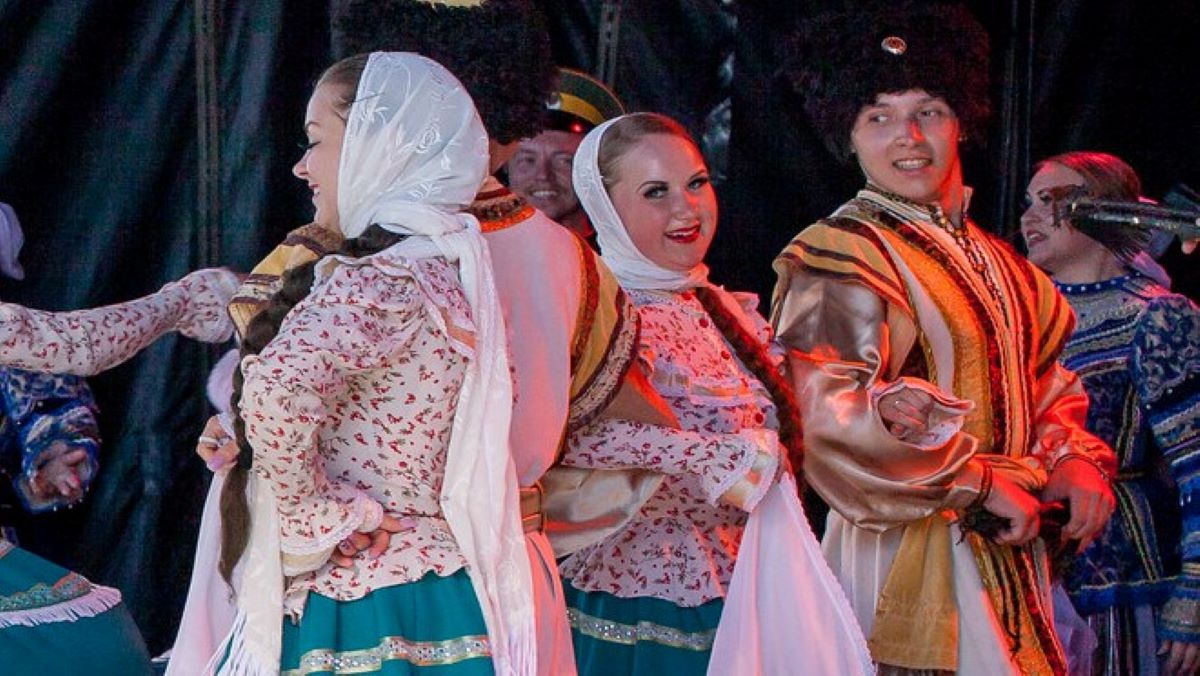
From the classic and lilting to the downright brash and brazen, we shall now match our steps to the sound of Cossack, also known as the Hopak dance that is native to the quaint and beautiful Ukraine. Derived from the Ukraininan word meaning ‘jump’ Hopak or Cossack is a dance rooted in the boyish charms of the performers. Usually, the dance is performed as a solitary concert dance and is characterized by enthusiastic hops, jumps and well-coordinated group movements that are delight to watch because of their youthful charm and upbeat rhythms! Not the one to be tied down by specified rhythm structures, the dance in its boisterous nature change tempos at any point. The dance and the performers both exude a predominant sense of manliness, heroism, speed and strength!
Popular Reads: Nepal Everest Base Camp Trek
And Want to check what our customers say about us, then Click Here!
9. The Choliya of Uttarakhand
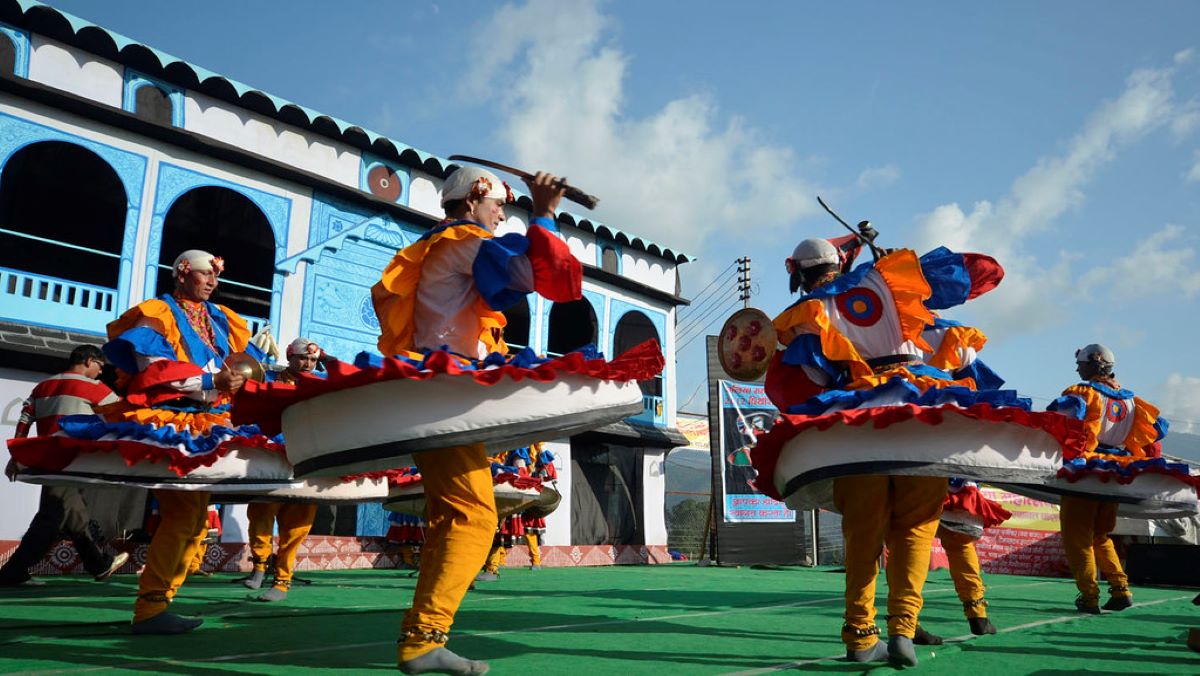
In the hills of Uttarakhand, the rhythms and dance reflect the rich martial traditions of the land as well as their mixed and yet prosperous heritage. Chholiya is one such dance that demonstrates the bravado of the warriors, who are the main performers of this dance form. Traditionally, it is performed at Kumaoni weddings and can trace its roots back to the belief that bad spirits follow a happy occasion and must be warded off. The beat of the Chholiya is given by the customary brass instruments such as Bagpipes, Dhol, Damaun and the nine-holed flute. The warriors’ dance is backed by enthusiastic and upbeat music designed to pump up their spirits and the act also consists of mock fights that they mime with swords in order to scare off the bad omens.
10. The Kecak Trance Dance of Indonesia
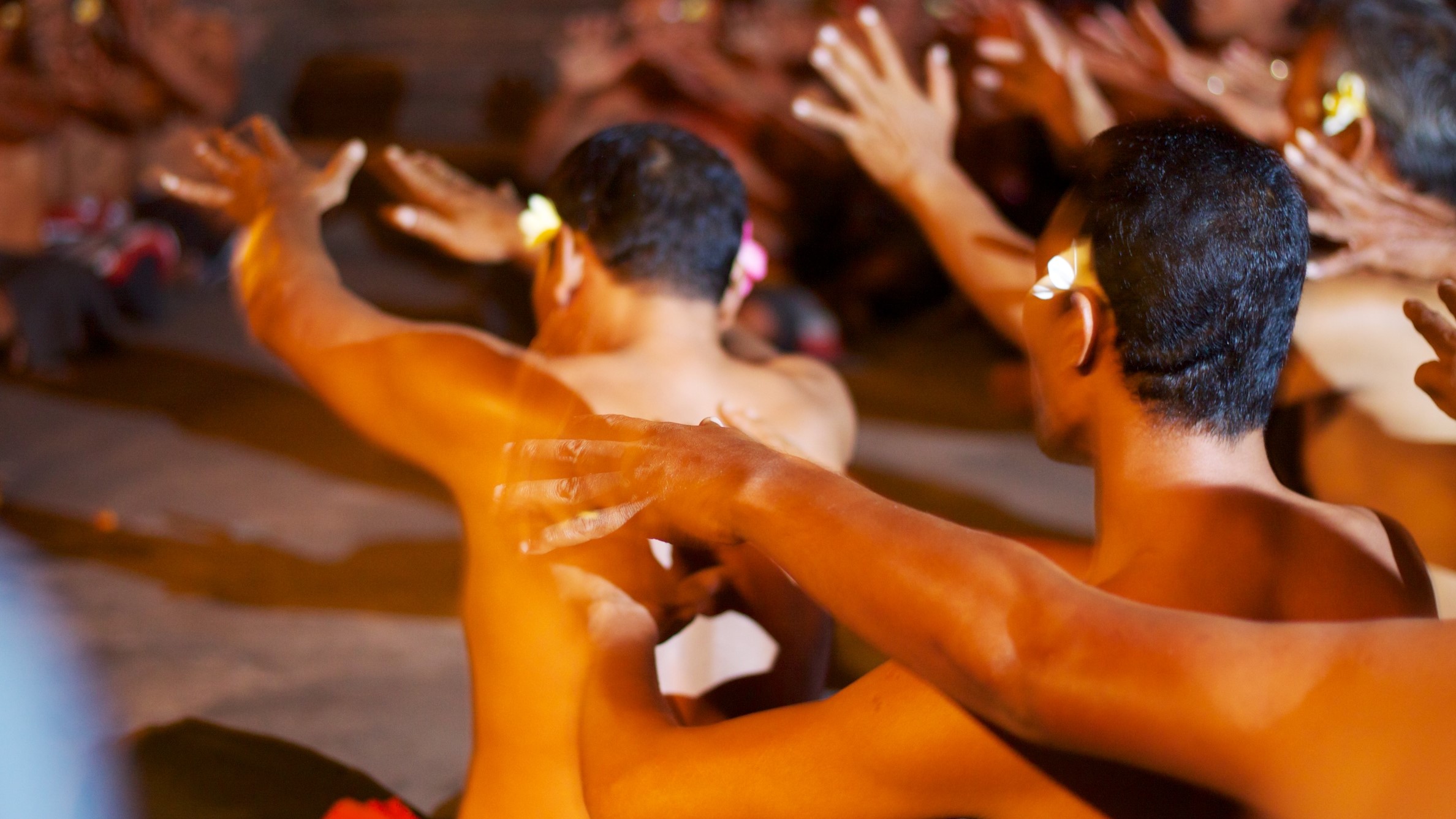
The bravado gives way to peace and devotion, the meditative dance of the Kekak has its roots in the Sanghyang Dance of the same country which is performed as a part of exorcism rituals. Originating as a meditative trance like ritual, the form now has changed to depicting the stories from the Ramayana. The iconic episodes are enacted by dancers clad in colorful and vibrant costumes. The music is provided by hymns sung in a soothing tune that is sure to induce a meditative state to push you into contemplation and a stupor that is hard to escape from. Just makes you realize, that when there is dance you don’t even need language, it traverses everything!
11. The Barong of Indonesia
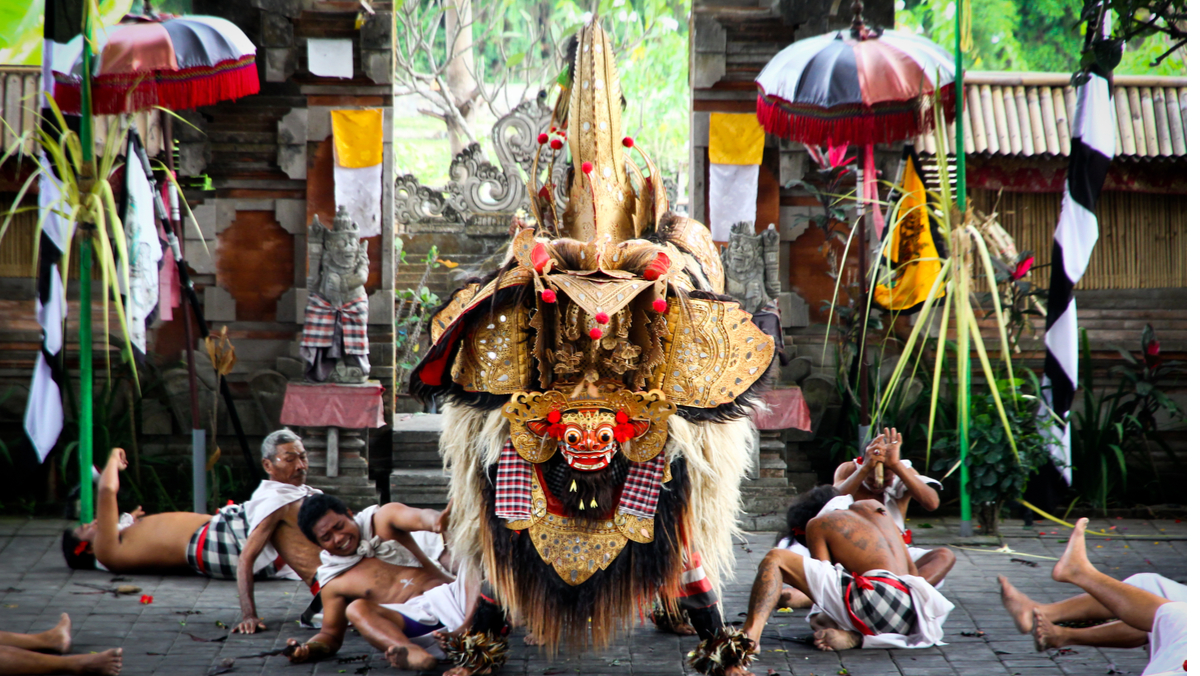
We could not resist including this unique form of dance from Indonesia, Barong just like Kathakali in India is another story telling dance that demonstrates the fight between the good and evil. Barong is believed to be a lion like creature in the mythology of Indonesian culture specifically Bali region. The leader of the good, Barong, battles against the enemy Rangda who is considered as the demon queen and mother of spirit guarders. The dance initially begins with a peaceful environment but soon is followed by the “Keris Dance” where Rangda appears and cast a black magic on the men of Erlangga, the king of Bali. The dance ends with a fight between Barong and Rangda where Rangda runs, depicting that good always wins over evil. The masks of Barong and Rangda are considered scared and thus are worshipped before being used in the dance. Barong is an extremely dangerous form of dancing as somebody can die or get injured during the dance. This dance is a beautiful blend of bravado, mythology and art.
12. The Polka of Bohemia
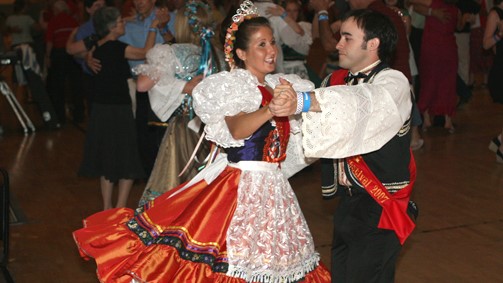
Deriving its name from a genre of music that originated in the mid-19th century in Bohemia, Polka is a Central European dance that is largely performed in Czechoslovakia and Poland. As more and more immigrants from different European cultures began settling across the United States, all the groups modified Polka and gave their own touch to it. Polka is performed in a large circle by couples who move clockwise. The background music is moderately fast, while the performers match their footsteps to the rhythm. The weight is constantly being shifted from one foot to other and that’s the reason why this dance is called so, as Polka in Bohemian language means ‘half step’. In their move to save this beautiful dance form a lot of organizations have been formed in US to preserve this cultural heritage. Grammy Awards for Best Polka Album was also introduced in 1986. Another interesting fact about this dance form is that it is one of the mandatory dances for the participants to perform at International Ice Dancing Competitions.
13. The Waltz of Germany
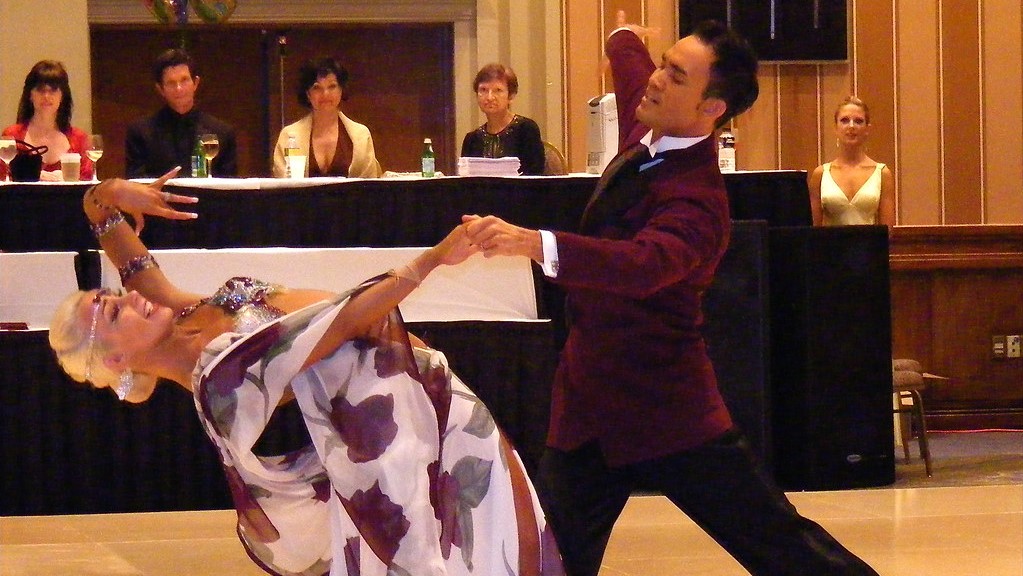
One of the most romantic dances till date, Waltz is one of the most popular Ballroom dances and is also considered by some as the ‘Mother of all present dances’. Originated in Germany, this pleasantly flowing dance gradually escalated to one of the most popular dances all over Europe and USA. This beautiful dance follows a ‘rise and fall pattern’ where the dancers swing their shoulders smoothly in parallel with the floor. The movement of the feet throughout the dance are stretched out steps, the first step is usually taken on the heel, the entire dance includes rising toes gradually in rhythm with the music. The music follows a ‘123-123’ beat, the whole dance and music together appears as a free flowing, swayed action and is certainly a feast to eyes. Compared to the rest of the ballroom dance forms, Waltz is an easy dance and simple to learn but nonetheless entertaining.
Must Read:
1. Best Selling Europe Tour Packages
2. Romantic Europe Honeymoon Packages
14. The Nati of Himachal Pradesh
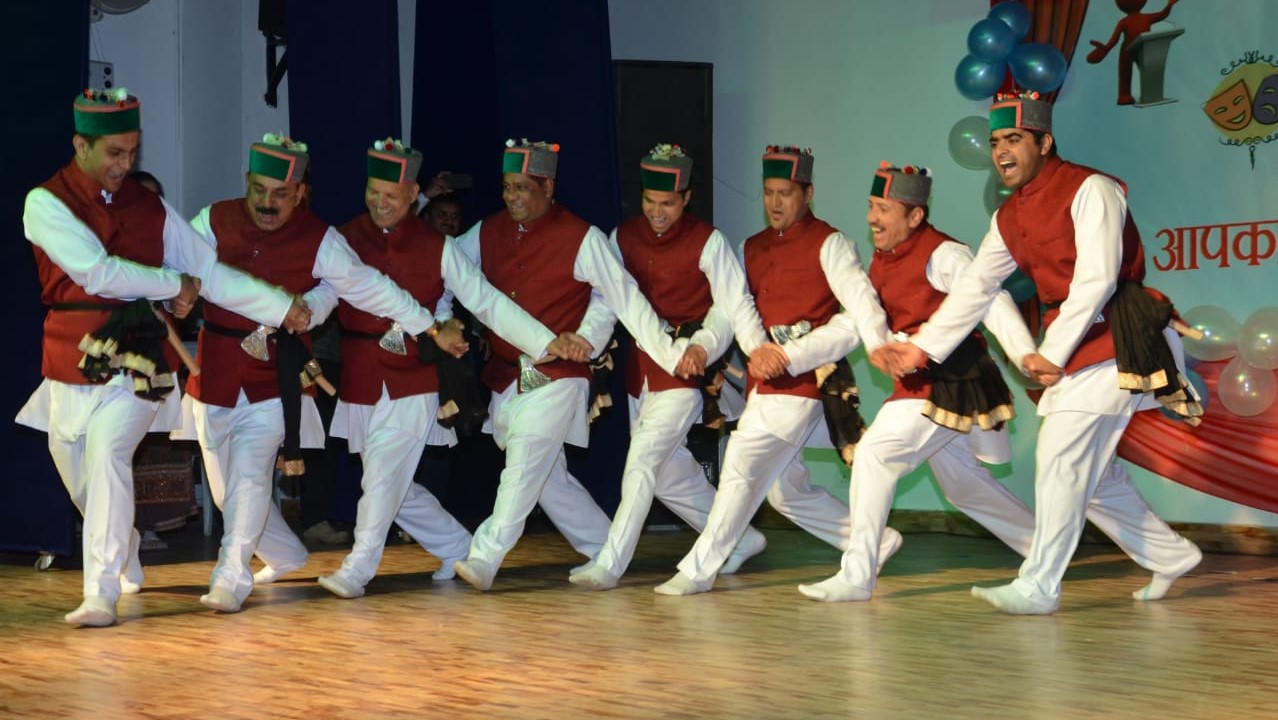
Nati a traditional dance form of Himachal Pradesh is largely performed during celebrations. The dance reflects the rich natural beauty of this serene place. The dance involved slow moves but a sequence is maintained throughout the dance. Dancers join their hands and move in a clockwise direction in large circles with the music. In all, there are thirteen types of dancing styles in Nati itself. Nati was initially performed by men dancers wearing famous Himachali caps and Kurta and Churidaars. However, now it is performed with men & women together. The music throughout the dance is played manually on special drums and trumpets that are specifically made for Himachali Nati. The entire dance consists of 5-6 steps that are repeated along with the circular movements. A calming swinging dance of the hills, Nati, is a beautiful folk dance practiced throughout Himachal.
15. The Raqs Sharki of Egypt
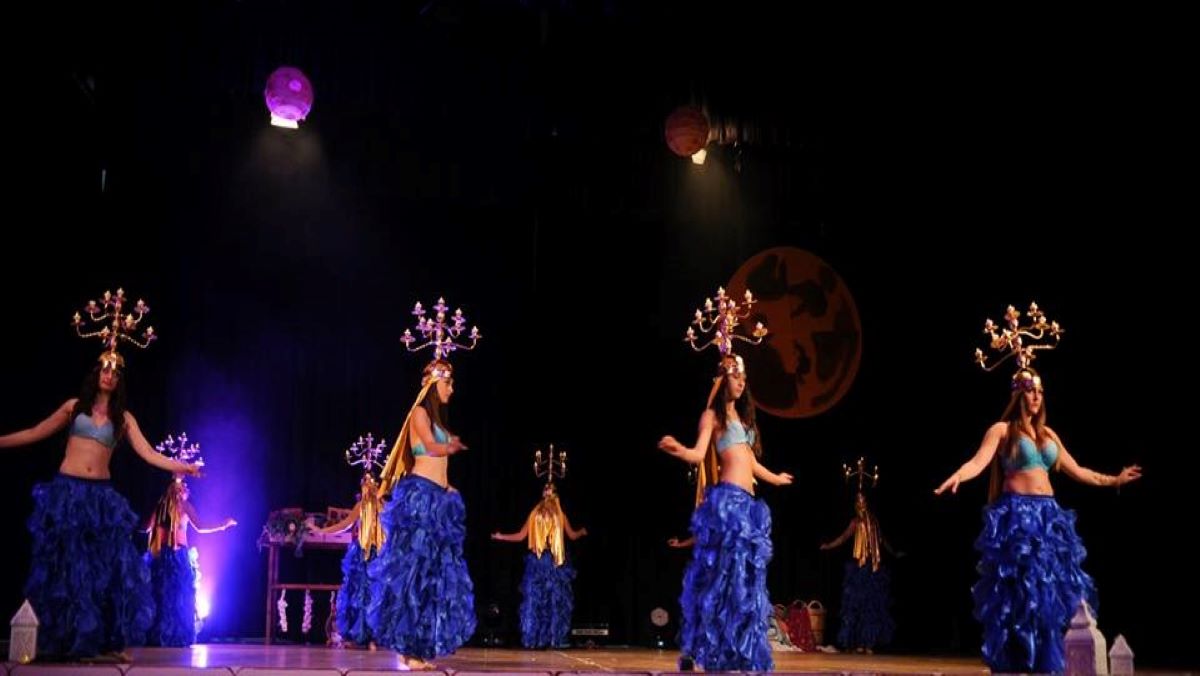
From the gentle tunes of the Nati Dance in Himachal Pradesh, let us now travel to Egypt to witness the dance of Raqs Sharki or Egyptian Belly dance. Much before it was given the westernized name – Belly Dance, Raqs Sharki existed in the palaces of kings of Egypt as a well respected and admired dance. The ‘Ghawazi’ as the Raqs Sharki dancers as traditionally called were even barred from wearing costumes that reveal too much of their skin. What sets Raqs Sharki apart from other form of Belly Dancing is that it was even performed by males and children and enjoyed a high level of acceptance until it was looked down upon as a form of prostitution. The dance now survives in its more worldly and hybrid forms that have spread as far as Australia. How strange it is that only art suffers at the hands of prejudice!
16. The Ghoomar of Rajasthan
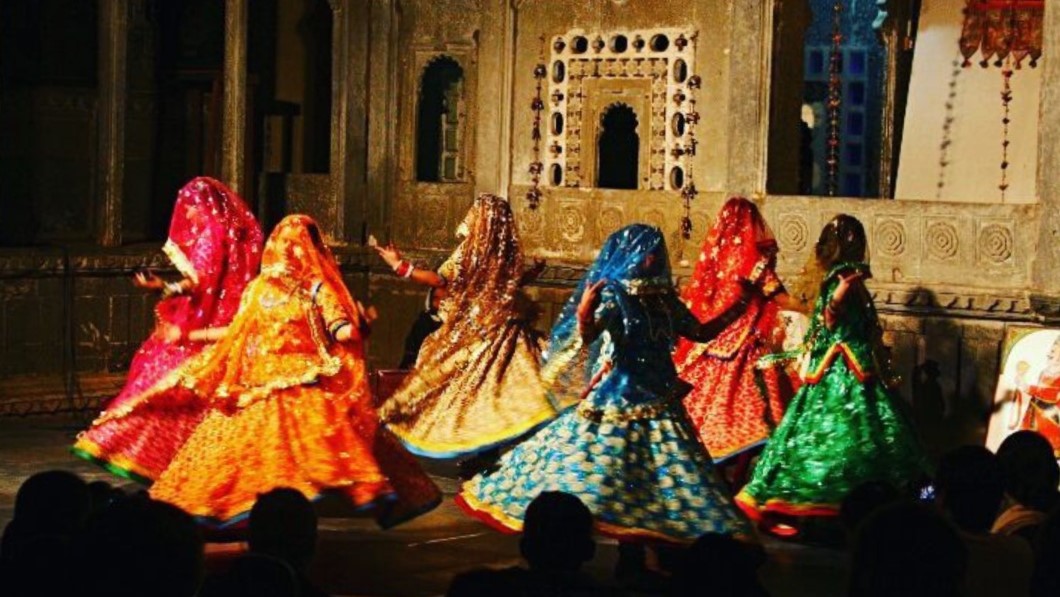
The colors of Rajasthan are enough to evoke a feeling of pride and happiness even in the most dull and dreary hearts. From the allure of Raqs Sharki, the rhythm slows down its pace to match the catchy tunes of the Ghoomar,a dance native to Rajasthan, has evolved as a social dance that encompasses women of all ages. The enthralling appeal of the Ghoomar lies in its specific and intricate footwork and waist movements that lend an amazing grace to the whole performance. The women with their faces covered by colourful Chuneris (Scarves), rotate slowly around as their skirts form a graceful pirouette around them- called ‘Ghoomar’. Such is the joy that performers derive from the dance, that they can even go on throughout the night!
Planning a trip to Rajasthan, Check out the Thrillophilia Review
17. The Celestial Dance of Cambodia

She steps on to the stage and the crowd is mesmerized by her charm, grace, appeal and yet the purity that she exudes prompts you to guard her from every evil and anything bad that can touch her. You are under the spell of the ‘Apsara’ or the beautiful maiden from the heavens above, she holds you with her charm and grace as she performs a dance that is ethereal and hence called the ‘Celestial Dance’. Dancing to gently swaying rhythms and tunes, the dancers are a delight to behold in all their grace and their beautifully intricate costumes that are topped off with beautiful golden crown. Their slow, graceful and measured movements can cast a spell on anybody!
18. The Adumu dance from Africa
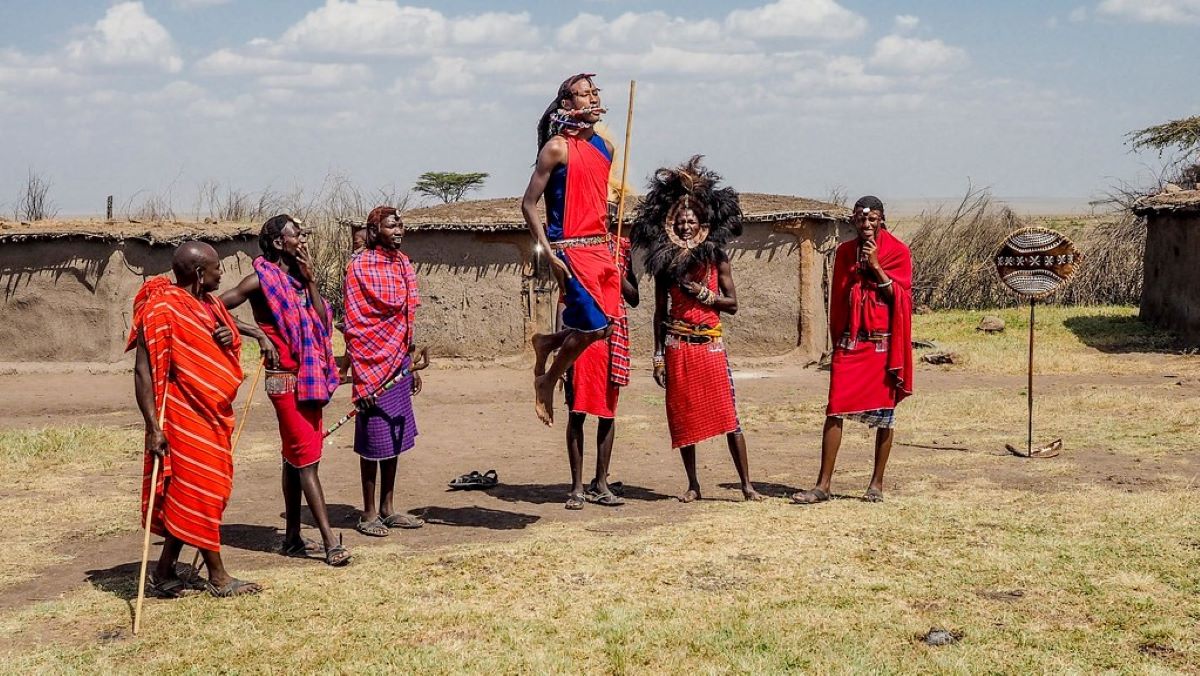
Swaying gracefully to the slow tunes from a flute is one way to express yourself through dance, but the Africans have moves that could get any two left footed man up on his feet and hop to their local dance known as the Adumu. The Adumu is a Maasai dance performed during the coming of age ceremony for warriors who are called ‘Eunoto.
The dance is also referred to as ‘aigus’ or the ‘jumping dance’. The dance is like a competition amongst the warriors and they don flaming red attire for this event. Forming a circle, the participants take turns to enter and begin jumping with vigor while making sure they have a narrow posture and that their heels do not touch the ground. To go along with the spectacle of watching them, there is also high decibel rhythmic yelling to sync with the dance.
19. The Ballet from France

It takes energy to jump rhythmically in vigor, but imagine dance being performed to perfection after several grueling years of practice and dedication, where every move is intricate and professional, like a handicraft woven with love. That dance is the world famous Ballet, which originated during the Italian Renaissance and slowly found its way into classrooms for young aspiring ballerinas. Countries around the world have their own interpretations of ballet and trained artists choreograph and educate youngsters on the different acrobatic moves of this sophisticated art. There are different versions of dance all over the world, a few being the romantic ballet, the neoclassical ballet, the contemporary ballet and the classical ballet. The dancers move in slow and quick steps to classical music with dramatic interpretations that are high in their emotional appeal.
20. The Yoruba dance from Nigeria
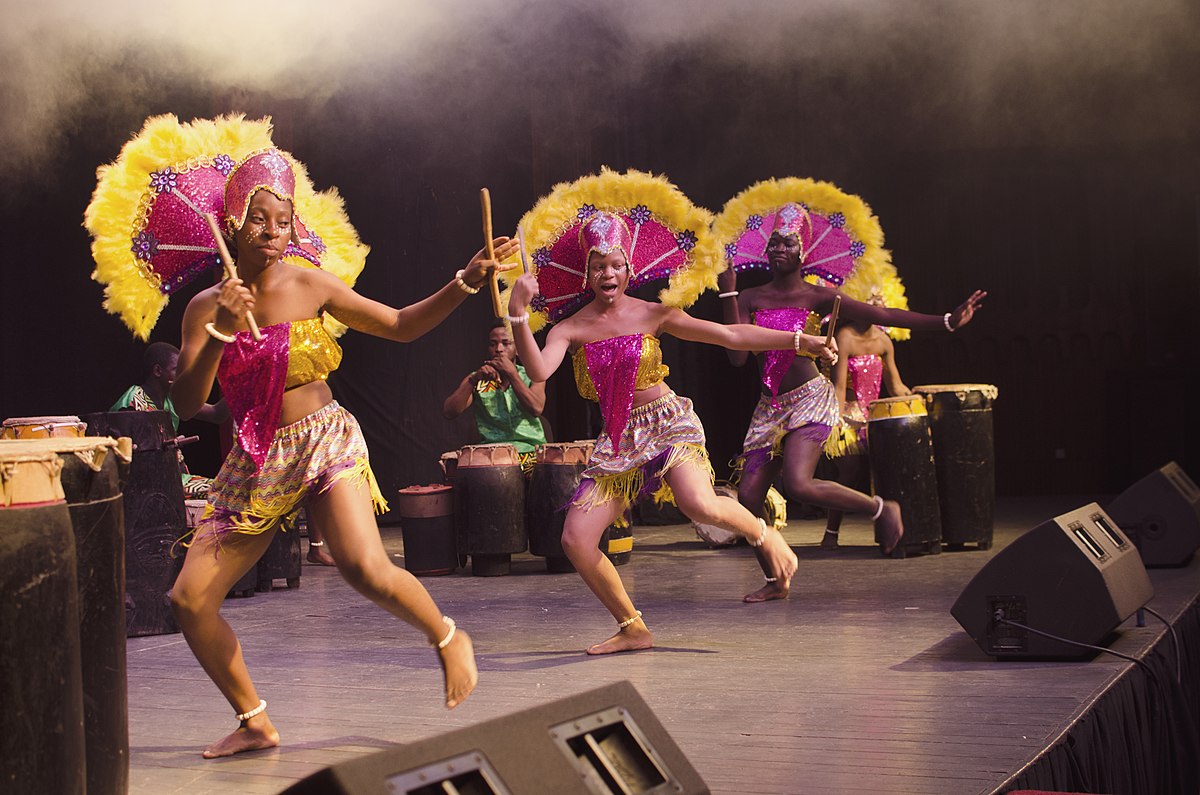
We started with the belief that dance is a part of everyday life, that where there is rhythm there is dance too and none illustrates it better than the tribes of Nigeria where dance and signing is as important as food for sustenance. Even before the babies are born, the rhythm and movements are ingrained in their DNA patterns, the mother and father alike celebrate every moment of existence with song and dance. The Yoruba Dance in particular is danced in colorful costumes and backed by catchy drums to set the beat. The movements are mostly restricted to the hips and characterized by a posture that mimics sitting. Beautiful to watch, the Yoruba dance demonstrates the sensibilities of the Nigerians, that are attuned to believe that celebration does not need an occasion, every moment can be celebrated and enjoyed if you understand its purpose.
Best Selling Domestic Tour Packages
Best Selling Himalayan Treks
Exciting Offer: Get 40% Off on Pawna Lake Camping.
